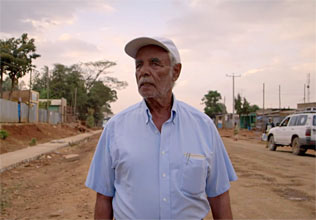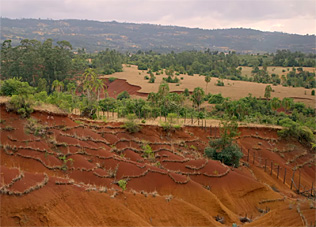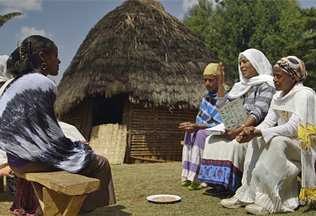-
Paving the Way: Ethiopia’s Youth on the Road to Sustainability
The third film in the “Healthy People, Healthy Environment” series
SYNOPSIS
Paving the Way: Ethiopia’s Youth on the Road to Sustainability transports viewers to an innovative development project in Ethiopia’s Gurage Zone where youth and their parents are working together to build a more sustainable future by connecting the dots between conservation, access to health care, and sustainable livelihoods. It is the final installment in the Wilson Center’s “Healthy People, Healthy Environment” trilogy, which explores integrated population, health, and environment (PHE) projects around the world.
CREDITS
Executive Producer: Sean Peoples
Director: Michael T. Miller
Narrator: Miriam Nasieku
Supervising Producer: Meaghan Parker
Associate Producer: Katharine Diamond
Motion Graphics: Drew PavelchakA co-production of the Woodrow Wilson Center and Think Out Loud Productions. Filmed on location in the Gurage Zone, Ethiopia.
CONTACT
Meaghan Parker, Environmental Change and Security Program, Woodrow Wilson Center
Phone: 202.691.4182
Email: meaghan.parker@wilsoncenter.org
ONE GENERATION TO THE NEXT
Tesema Merga was part of a vanguard of young Ethiopians who brought the first roads to the Gurage in the 1960s. He and others went on to form the Gurage People’s Self-help Development Organization (GPSDO).
Today, Tesema and GPSDO are working with the next generation of local leaders to establish PHE clubs at local schools and encourage girls education and empowerment.


MEASURING SUCCESS
Combining population, health, and environment programming seems natural to many people, but measuring the added value an integrated approach can be difficult. Ethiopia’s strong history of PHE programs has led to many different types of multi-sectoral evaluation.
BUILDING RESILIENCE
Resilience means different things to different people, says Roger-Mark De Souza in a Wilson Center podcast. But health is one of the highest priorities in many small communities like those in rural Ethiopia.
“Health is everything,” he says. “A resilient community is a healthy one, and if you’re unable to address the key health dimensions around communities and think about how you scale that up, resiliency programming will face many more challenges.”

Photos: Michael Miller and Sean Peoples/Wilson Center. Designer: Schuyler Null.
 A Publication of the Stimson Center.
A Publication of the Stimson Center.




